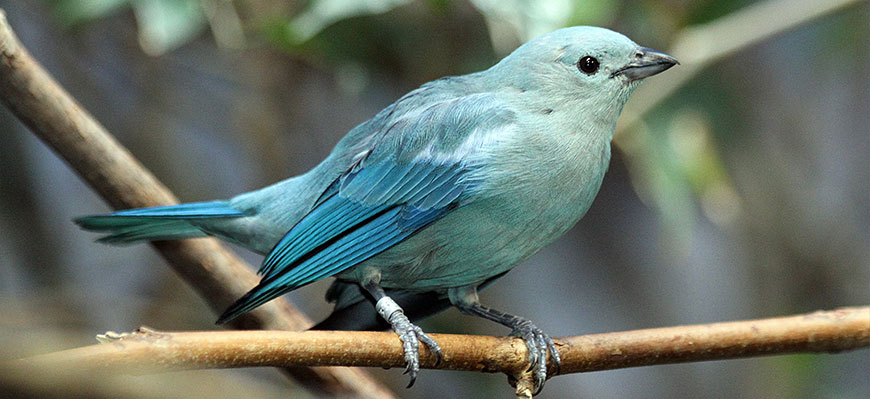CLASSIFICATION
Order: Passeriformes
Family: Thraupidae
Genus: Thraupis
Species: episcopus
RANGE
From southern regions of Mexio to northernmost regions of South America including Bolivia, Brazil and the Amazon Basin. It has been introduced in Peru. They are also found on the island of Trinidad and Tobago.
HABITAT
Prefers open woodlands, cultivated areas and gardens.
SIZE
Length: 6 – 7 inches.
LIFE EXPECTANCY
Around 9.5 years in the wild. Up to 12 years in captivity.
REPRODUCTION
- They build deep cup nests, often in buildings or high trees.
- Lay 1 – 3 eggs, whitish to grey-green in color.
- Incubation period lasts around 14 days, with another 17 to fledgling.
DIET
Wild: Mainly fruit, but will also take nectar and insects.
BEHAVIOR
Usually found in pairs or small groups, the blue-gray tanager has been known to thrive around human habitation (specifically areas cleared for grazing). They can often be found along roads, cities, farmlands, forest edges and other semi-open areas.
POINTS OF INTEREST
- Known for being vocal birds, they often communicate using songs with the males vocals being longer and higher-pitched.
- Important for seed-dispersal of tropical plants
STATUS
Common






